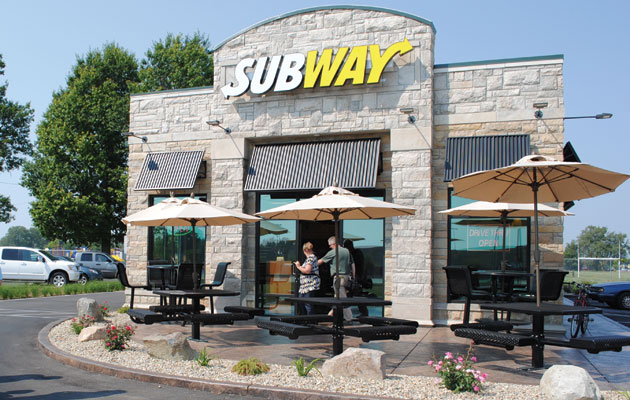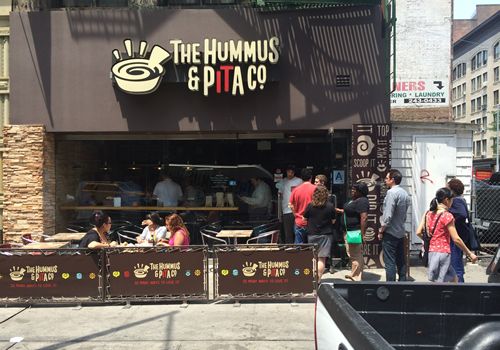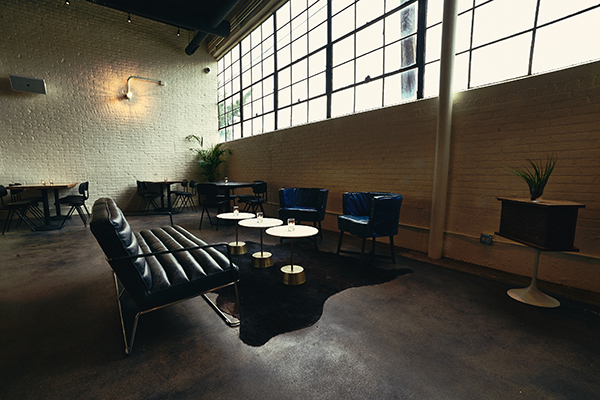With the prevalence of eco-friendly builders, architects, suppliers and products, restaurant chains can choose from a variety of options that suit their needs as their systems look to expand in an environmentally friendly way.
For Subway franchisee George Estep, simultaneously building an eco-friendly store in Kokomo, Ind., and a traditional site 65 miles away in Muncie, was a real eye-opener. By appearance alone, the two free-standing restaurants with drive-thru access seem virtually identical.
A closer look reveals subtle, yet substantial, differences.
The green building was constructed using recycled materials, including reused Indiana stone on the exterior. The design of a white membrane not only assists in migrating heat away from the building, but it also diverts rainwater into the soil.
Inside, a computerized energy savings unit in the dining room features a display that informs staff of energy spikes. With this system, lights automatically turn on and off, depending on the amount of sunlight generated in the front of house. A visit to the restrooms reveals dual-flush toilets that monitor water usage and sinks with motion sensors. The restaurant also features interior and exterior LED lighting and an energy-recovery ventilator that works in conjunction with the building's air exhaust system to improve inside humidity and reduce utility costs. The high-efficiency HVAC system provides additional energy savings.
With both projects in progress at the same time, Estep was able to easily break down the additional costs of going green, which he says totaled between $26,000 and $28,000. "This was my first green site, so I was nervous not knowing what additional costs were involved," he says. "Now that I know, the only thing I would have done differently is to have made the Muncie site eco-friendly, too. I'm still kicking myself."
Although Estep does not yet know the total return on investment, he says the Kokomo location saves $600 a month on electricity and water costs alone. "Those who understand the math will want to build green," Estep says. "Operators pay a bit more up front to save substantially on the back end."
Certification Options
Even during this economic downturn, where finding the funds to open a restaurant of any type represents a challenge, more operators continue to realize the benefits of going green.
The Green Restaurant Association (GRA), a Boston-based nonprofit organization that provides tools and certification for operators seeking to build environmentally friendly restaurants, reports that the number of restaurants seeking green certification triples each year. "Instead of calling us a month or two before opening, we're now hearing from operators six to nine months out," says Michael Oshman, GRA's founder and CEO. "We attribute this to the awareness of sustainable design vastly increasing in the restaurant industry."
To earn certification from the GRA, restaurants must accumulate at least 10 points in categories that include water efficiency, waste reduction and recycling, sustainable food, energy, disposables, and chemical and pollution reduction. Point allocations vary, from three points for an Energy Star-qualified dishwasher to 6.5 points for reusable napkins. Operations must also have a full-scale recycling program and be free of polystyrene. The GRA also requires ongoing education.
In addition, the GRA offers three certification levels, with 100 total points required for two-star certification, a minimum of 175 points needed for a three-star designation and at least 300 points necessary for four-star certification. The GRA's Sustainabuild designation includes specific scoring prerequisites and requires a total of 205 points.
The U.S. Green Building Council (USGBC), based in Washington, D.C., reports that a majority of quick-serve, and increasing number of full-serve, restaurants are experimenting with LEED (Leadership in Energy and Environmental Design) to determine what works and what doesn't. To assist the restaurant industry in streamlining its scalable certification process, the USGBC launched its LEED for retail rating systems and a LEED volume program in November 2010. The volume program scrutinizes building and equipment energy performance and includes a kitchen-efficiency requirement that monitors the operation of all units. McDonald's and Starbucks are two of the first participants in the LEED volume program.
"There are some pitfalls associated with LEED," says Nick Shaffer, USGBC's manager of commercial real estate. "Costs can seem higher initially, since there is new technology involved. But studies have shown that today's LEED certified projects cost the same as, or at maximum 2 percent more than, traditional designs."
Price misconceptions are not uncommon with LEED certification. In the past these projects were much pricier due to a shortage of materials, expensive new technology and other factors. During the past couple of years, though, costs have become competitive with non-green builds and renovations.
CKE Restaurants Inc., parent company of Carl's Jr., built its first green restaurant in January 2009. The Carpinteria, Calif., site includes solar panels, a parking lot with LED lights and a system that recaptures rainwater. It was not LEED certified. "Our architect at the time was not familiar with LEED, and the additional cost to become certified at that time was about $100,000," says David Luxton, vice president of construction and facilities for CKE Restaurants, who heads construction of the company's green units.




